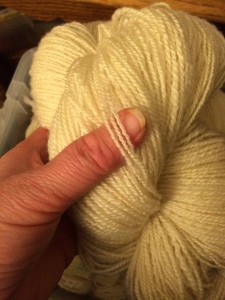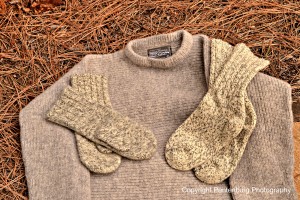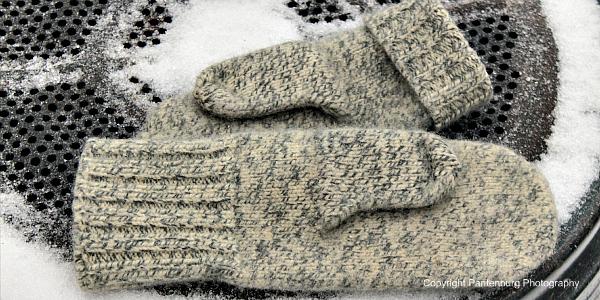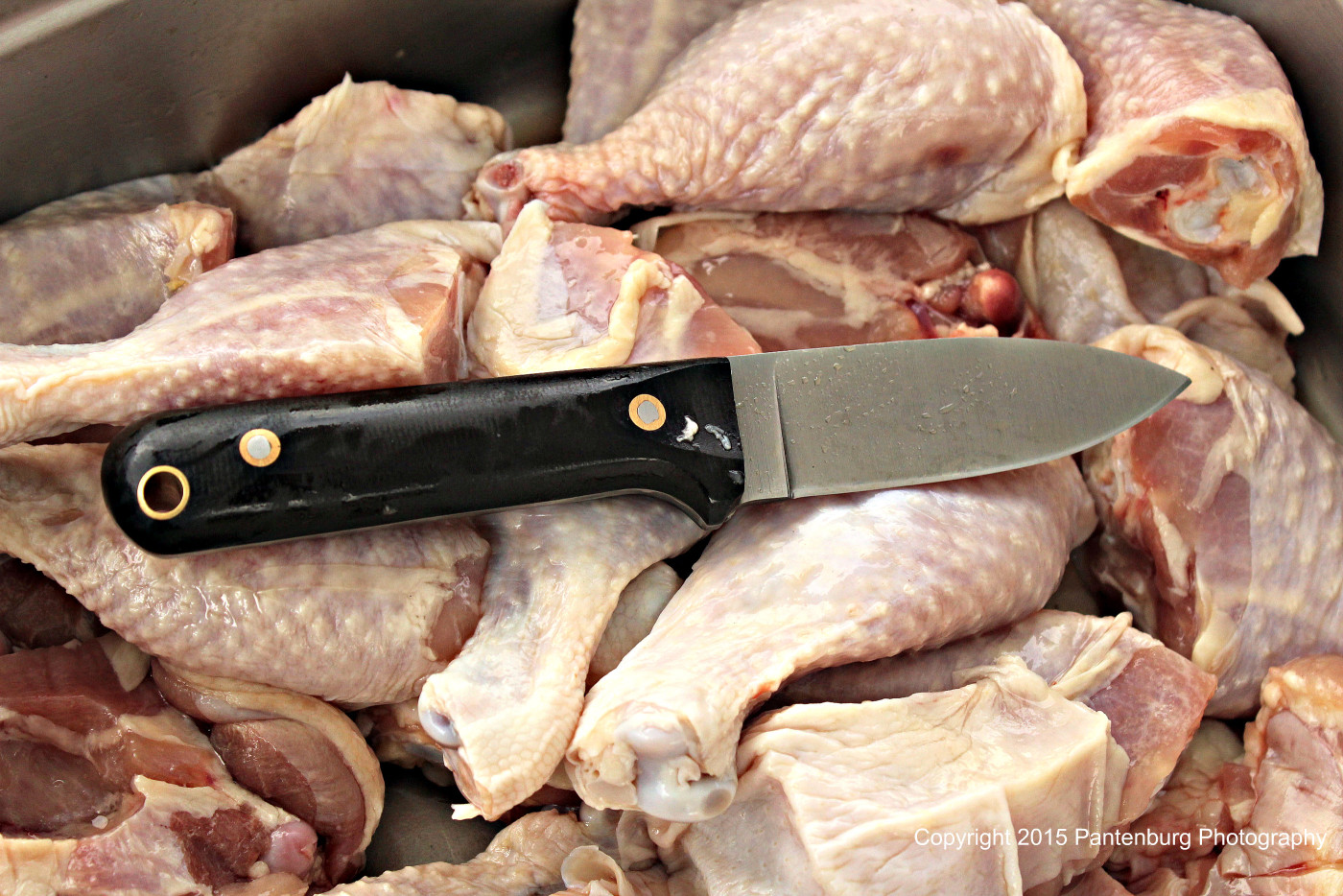Can’t wear wool because it makes you itch? Here are some things to consider before you give up on the natural fiber.
by Leon Pantenburg
The wool uniform made me consider deserting.
The temperatures were in the high 90s, the humidity had to be close to that, and it would have been miserable even if I hadn’t been wearing the all-wool Confederate uniform. I was one of several hundred Civil War re-enactors participating in the Champion Hill battle near Jackson, Mississippi.
The thick wool uniform was like wearing a sweatsuit. In addition, it was itchy. Luckily, that wasn’t my only experience with wool clothing.
But people frequently comment they can’t wear wool because it’s itchy, or uncomfortable or they think they’re allergic to it. Well, some people are, but in other cases, the wool itches for different reasons.

Me, circa early 1980s, as a Confederate soldier.
And it’s worth figuring this out, because wool garments are a great investment. When it comes to winter wear, wool is my go-to choice. Since wool fibers resist piling, snagging, and breaking, wool garments typically outlast synthetic sweaters. My old reliable Land’s End red sweater has had regular use for about 30 years, and is still going strong.
Furthermore, since wool fibers are naturally elastic, wool garments don’t wrinkle, bag, or sag as other fabrics.
When it comes to homesteading or anything related to natural fibers, I consult my sister, Karla Moore. She is a homesteader type, and cleans, cards, and spins wool from sheared fleece. Then she knits it into custom, artisan hats, mittens, scarfs etc.

My wool sweater has served me well.
Here are five tips for buying and wearing wool so you don’t itch:
Wear a base layer: I generally wear a long-sleeved polypropylene undershirt under everything in the winter. The polypropylene wicks away moisture from your skin and keeps you dry. But a better choice, for me, is to wear a merino wool long-sleeved wool under shirt, because it seems to breath better. A cotton tee shirt is a bad choice – cotton absorbs and holds moisture, leaving you cold and clammy.
Choose hot water cleaned wool: This can be tough to find, unless you know the maker. According to Karla, the initial cleaning may determine if the sweater ends up being itchy or not.
“Commercial wool washing is done differently than the hand-washed cleaning, and manufacturers probably use chemicals to process it,” she said. “Wool, just after it is shorn off the sheep, will probably be dirty and it may have hay and other ‘organic’ things in it. Sometimes it takes a lot of work to get the fleece clean.”
Lanolin, the natural oil in wool, is what make it water and fire resistant, Karla added, so don’t wash the wool too much or some of the water and fire resistant quality will be removed.
Try organic: Chemicals in commercial wool products may make you itch. The harsher detergents and other additives also make the fibers a lot rougher.
“You could be allergic to the cleaning chemicals in the garment, or the coarser, rougher wool,” Karla said. “I’ve gotten some commercial wool garments I couldn’t wear.”
The more processed the wool is, she added, the more likely it is to be harsh and rough. The traditional way to clean wool is with boiling water, she said, but this needs to be done in moderation.
“Boiling water takes the lanolin out of the wool,” Karla said, “so the more the wool is washed, the less water repellent it will be.”

Karla spun this yarn from an Iowa State Fair champion fleece.
Check out how the yarn is spun: A loose, fluffy yarn tends to trap air and heat, Karla said, and will usually be less itchy. Tighter spun yarn and weaves have more potential to be itchy.
What kind of sheep did the wool come from? Basically, all the consumer needs to know is that the finer the wool fiber, the less potential there is for itchiness.
Fine wool sheep produce wool fibers with a very small fiber diameter, usually 20 microns or less, according to Sheep101.info. Most sheep of this type are Merino or trace their ancestry to the Merino.
The Rambouillet, related to the Merino, is the most common breed of sheep in the U.S., especially the western states where the majority of sheep in the U.S. can still be found.
At the other end of the spectrum is the coarsest grade of wool (usually over 38 microns) is used in the manufacture of carpets, according to Sheep101.info. Carpet wool breeds are usually double-coated, with a coarse long outer coat for protection against the elements.
Hair Sheep: Some breeds lack wool and are covered with hair instead. Some hair sheep have pure hair coats, whereas others have coats that contain a mixture of hair and wool fibers that shed naturally.
Hair sheep account for about 10 percent of the world’s sheep population and are the fastest growing segment of the American sheep industry. In fact, the Katahdin, Sheepinfo101 claims, an American breed of hair sheep, now leads all US sheep breeds in registration numbers and transfers.

The Dechstein 100 percent wool mittens, sweater and socks are durable, effective choices for cold weather wear.
When choosing the fabrics for your outdoor winter clothing, why not just use synthetics?
Synthetics are great fabrics in many situations. They are typically cheaper and more lightweight than wool, and probably more widely available.
But many of the synthetics are petroleum based. This means the carbon footprint is extreme, there is a long complicated manufacturing process, and the synthetics are not self sustaining.
Sheep, on the other hand, convert grass, weeds and shrubs into fiber for clothing. A sheep can help control brush and weeds, be sheared many times, and there is virtually no air pollution associated with raising wool.
And wool garments are a great investment. Since wool fibers resist piling, snagging, and breaking, wool garments typically outlast synthetic sweaters. Furthermore, since wool fibers are naturally elastic, wool garments don’t wrinkle, bag, or sag as other fabrics might.
The bottom line is that you’ll have to pick what winter clothing fiber works best for you. But don’t give up on wool until you consider all these suggestions.
Please click here to check out and subscribe to the SurvivalCommonSense.com YouTube channel – thanks!






Leave a Reply